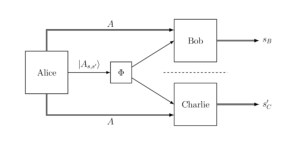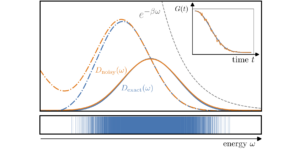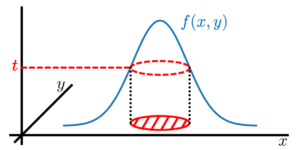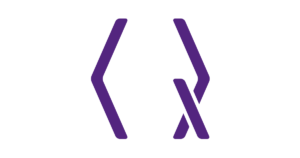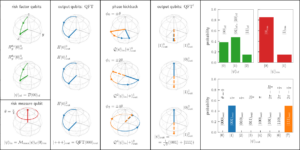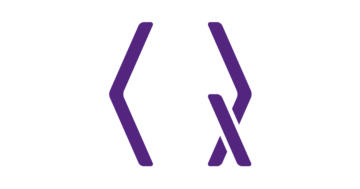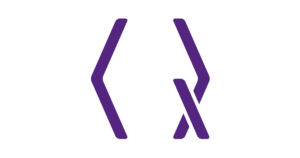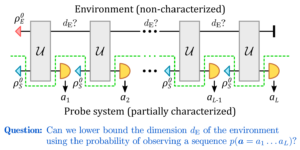1Institute for Quantum Optics and Quantum Information (IQOQI) Vienna, Austrian Academy of Sciences, Boltzmanngasse 3, A-1090 Vienna, Austria
2Vienna Center for Quantum Science and Technology (VCQ), Faculty of Physics, University of Vienna, Boltzmanngasse 5, A-1090 Vienna, Austria
3Dipartimento di Fisica, La Sapienza Università di Roma, Piazzale Aldo Moro 5, Roma, Italy
4Aix-Marseille Univ, Université de Toulon, CNRS, CPT, Marseille, France
5Institute for Gravitation and the Cosmos, The Pennsylvania State University, University Park, Pennsylvania 16802, USA
6Basic Research Community for Physics e.V., Mariannenstraße 89, Leipzig, Germany
Find this paper interesting or want to discuss? Scite or leave a comment on SciRate.
Abstract
Time at the Planck scale ($sim 10^{-44},mathrm{s}$) is an unexplored physical regime. It is widely believed that probing Planck time will remain for long an impossible task. Yet, we propose an experiment to test the discreteness of time at the Planck scale and estimate that it is not far removed from current technological capabilities.
Featured image: Spacetime view of the proposed experiment. A small mass $m$ undergoes a spin-dependent path superposition in the gravitational field of another mass $M$. The two branches accumulate a difference in phase $deltaphi$ due to the gravitational interaction. In general relativistic terms, the difference in phase is due to a difference $deltatau$ in proper times along the two trajectories: $deltaphi=frac{m}{m_P}frac{deltatau}{t_P},$ where $m_P$ and $t_P$ are the Planck mass and Planck time, respectively. If $deltatau$ can only take a finite set of values, then so does $deltaphi$. We show that, under some assumptions, there exists a range of experimental parameters that allow to detect a hypothetical granularity of time.
[embedded content]
► BibTeX data
► References
[1] G. Edward Marti, Ross B. Hutson, Akihisa Goban, Sara L. Campbell, Nicola Poli, and Jun Ye. “Imaging optical frequencies with 100 $mu$Hz precision and 1.1 $mu$m resolution”. Physical Review Letters 120, 103201 (2018). arXiv:1711.08540.
https://doi.org/10/gc5sj2
arXiv:1711.08540
[2] Garrett Wendel, Luis Martinez, and Martin Bojowald. “Physical implications of a fundamental period of time”. Physical Review Letters 124, 241301 (2020). arXiv:2005.11572.
https://doi.org/10/gm7w6s
arXiv:2005.11572
[3] Sougato Bose, Anupam Mazumdar, Gavin W. Morley, Hendrik Ulbricht, Marko Toroš, Mauro Paternostro, Andrew Geraci, Peter Barker, M. S. Kim, and Gerard Milburn. “A Spin Entanglement Witness for Quantum Gravity”. Physical Review Letters 119, 240401 (2017). arXiv:1707.06050.
https://doi.org/10/gcsb22
arXiv:1707.06050
[4] Chiara Marletto and Vlatko Vedral. “Gravitationally-induced entanglement between two massive particles is sufficient evidence of quantum effects in gravity”. Physical Review Letters 119, 240402 (2017). arXiv:1707.06036.
https://doi.org/10/gcsjgn
arXiv:1707.06036
[5] Ryan J. Marshman, Anupam Mazumdar, and Sougato Bose. “Locality and Entanglement in Table-Top Testing of the Quantum Nature of Linearized Gravity”. Physical Review A 101, 052110 (2020). arXiv:1907.01568.
https://doi.org/10/gm7w6z
arXiv:1907.01568
[6] Tanjung Krisnanda, Guo Yao Tham, Mauro Paternostro, and Tomasz Paterek. “Observable quantum entanglement due to gravity”. npj Quantum Information 6, 12 (2020). arXiv:1906.08808.
https://doi.org/10/ggz5q7
arXiv:1906.08808
[7] Sougato Bose. “Table-top Testing of the Quantum Nature of Gravity: Assumptions, Implications and Practicalities of a Proposal” (2020).
[8] Richard Howl, Vlatko Vedral, Devang Naik, Marios Christodoulou, Carlo Rovelli, and Aditya Iyer. “Non-Gaussianity as a signature of a quantum theory of gravity”. PRX Quantum 2, 010325 (2021). arXiv:2004.01189.
https://doi.org/10/gkq6wg
arXiv:2004.01189
[9] Markus Arndt and Klaus Hornberger. “Testing the limits of quantum mechanical superpositions”. Nature Physics 10, 271–277 (2014). arXiv:1410.0270.
https://doi.org/10/f3sqz7
arXiv:1410.0270
[10] Oriol Romero-Isart, Mathieu L. Juan, Romain Quidant, and J. Ignacio Cirac. “Toward Quantum Superposition of Living Organisms”. New Journal of Physics 12, 033015 (2010). arXiv:0909.1469.
https://doi.org/10/cbr7wn
arXiv:0909.1469
[11] Sandra Eibenberger, Stefan Gerlich, Markus Arndt, Marcel Mayor, and Jens Tüxen. “Matter-wave interference with particles selected from a molecular library with masses exceeding 10000 amu”. Physical Chemistry Chemical Physics 15, 14696 (2013). arXiv:1310.8343.
https://doi.org/10/f3sqz8
arXiv:1310.8343
[12] Marios Christodoulou and Carlo Rovelli. “On the possibility of laboratory evidence for quantum superposition of geometries”. Physics Letters B 792, 64–68 (2019). arXiv:1808.05842.
https://doi.org/10/gj6ssc
arXiv:1808.05842
[13] Marios Christodoulou and Carlo Rovelli. “On the possibility of experimental detection of the discreteness of time”. Frontiers in Physics 8, 207 (2020). arXiv:1812.01542.
https://doi.org/10/gj6ssf
arXiv:1812.01542
[14] Sougato Bose and Gavin W. Morley. “Matter and spin superposition in vacuum experiment (MASSIVE)” (2018). arXiv:1810.07045.
arXiv:1810.07045
[15] Hadrien Chevalier, A. J. Paige, and M. S. Kim. “Witnessing the non-classical nature of gravity in the presence of unknown interactions”. Physical Review A 102, 022428 (2020). arXiv:2005.13922.
https://doi.org/10/ghcmzz
arXiv:2005.13922
[16] R. Colella, A. W. Overhauser, and S. A. Werner. “Observation of Gravitationally Induced Quantum Interference”. Physical Review Letters 34, 1472–1474 (1975).
https://doi.org/10/dktp8g
[17] Hartmut Abele and Helmut Leeb. “Gravitation and quantum interference experiments with neutrons”. New Journal of Physics 14, 055010 (2012). arXiv:1207.2953.
https://doi.org/10/f3smc3
arXiv:1207.2953
[18] Julen S. Pedernales, Gavin W. Morley, and Martin B. Plenio. “Motional Dynamical Decoupling for Matter-Wave Interferometry”. Physical Review Letters 125, 023602 (2020). arXiv:1906.00835.
https://doi.org/10/ghcp3t
arXiv:1906.00835
[19] Thomas W. van de Kamp, Ryan J. Marshman, Sougato Bose, and Anupam Mazumdar. “Quantum Gravity Witness via Entanglement of Masses: Casimir Screening”. Physical Review A 102, 062807 (2020). arXiv:2006.06931.
https://doi.org/10/gm7w6x
arXiv:2006.06931
[20] H. Pino, J. Prat-Camps, K. Sinha, B. P. Venkatesh, and O. Romero-Isart. “On-chip quantum interference of a superconducting microsphere”. Quantum Science and Technology 3, 025001 (2018). arXiv:1603.01553.
https://doi.org/10/ghfgt3
arXiv:1603.01553
[21] National High Magnetic Field Laboratory. “Selected Scientific Publications Generated from Research Conducted in the 100 Tesla Multi-Shot Magnet”. Technical report. National High Magnetic Field Laboratory (2020). url: nationalmaglab.org/user-facilities/pulsed-field-facility/instruments-pff/100-tesla-multi-shot-magnet.
https://nationalmaglab.org/user-facilities/pulsed-field-facility/instruments-pff/100-tesla-multi-shot-magnet
[22] J. D. Carrillo-Sánchez, J. M. C. Plane, W. Feng, D. Nesvorný, and D. Janches. “On the size and velocity distribution of cosmic dust particles entering the atmosphere”. Geophysical Research Letters 42, 6518–6525 (2015).
https://doi.org/10/f7pw8f
[23] Matthew Dean Schwartz. “Quantum field theory and the standard model”. Cambridge University Press. New York (2014).
[24] Andrea Di Biagio (2022). code: AndreaDiBiagio/TimeDiscretenessExperimentPlots.
https://github.com/AndreaDiBiagio/TimeDiscretenessExperimentPlots
[25] Oriol Romero-Isart. “Quantum superposition of massive objects and collapse models”. Physical Review A 84, 052121 (2011). arXiv:1110.4495.
https://doi.org/10/b8njfn
arXiv:1110.4495
[26] Igor Pikovski, Magdalena Zych, Fabio Costa, and Caslav Brukner. “Universal decoherence due to gravitational time dilation”. Nature Physics 11, 668–672 (2015). arXiv:1311.1095.
https://doi.org/10/5ds
arXiv:1311.1095
[27] S. Bhagavantam and D. A. A. S. Narayana Rao. “Dielectric Constant of Diamond”. Nature 161, 729–729 (1948).
https://doi.org/10/c5cb9c
[28] F. Nicastro, J. Kaastra, Y. Krongold, S. Borgani, E. Branchini, R. Cen, M. Dadina, C. W. Danforth, M. Elvis, F. Fiore, and others. “Observations of the Missing Baryons in the warm-hot intergalactic medium”. Nature 558, 406–409 (2018). arXiv:1806.08395.
https://doi.org/10/gkkwhr
arXiv:1806.08395
[29] Katia M. Ferrière. “The interstellar environment of our galaxy”. Reviews of Modern Physics 73, 1031–1066 (2001).
https://doi.org/10/fghhgq
[30] G. Gabrielse, X. Fei, L. Orozco, R. Tjoelker, J. Haas, H. Kalinowsky, T. Trainor, and W. Kells. “Thousandfold improvement in the measured antiproton mass”. Physical Review Letters 65, 1317–1320 (1990).
https://doi.org/10/bfxv3j
[31] G. Gabrielse. “Comparing the antiproton and proton, and opening the way to cold antihydrogen”. In Advances In Atomic, Molecular, and Optical Physics. Volume 45, pages 1–39. Elsevier (2001).
https://doi.org/10/g3q5
[32] Konrad Zuse. “Rechnender Raum (Calculating Space)”. Schriften Zur Dataverarbeitung 1 (1969). url: philpapers.org/rec/ZUSRR.
https://philpapers.org/rec/ZUSRR
[33] Ted Jacobson, Stefano Liberati, and David Mattingly. “Lorentz violation at high energy: Concepts, phenomena and astrophysical constraints”. Annals of Physics 321, 150–196 (2006). arXiv:astro-ph/0505267.
https://doi.org/10/bgp7t5
arXiv:astro-ph/0505267
[34] A. A. Abdo, M. Ackermann, M. Ajello, K. Asano, W. B. Atwood, M. Axelsson, L. Baldini, J. Ballet, G. Barbiellini, M. G. Baring, and others. “A limit on the variation of the speed of light arising from quantum gravity effects”. Nature 462, 331–334 (2009).
https://doi.org/10/dvftxs
[35] Giovanni Amelino-Camelia. “Burst of support for relativity”. Nature 462, 291–292 (2009).
https://doi.org/10/dwrmk3
[36] Robert J. Nemiroff, Ryan Connolly, Justin Holmes, and Alexander B. Kostinski. “Bounds on Spectral Dispersion from Fermi-Detected Gamma Ray Bursts”. Physical Review Letters 108, 231103 (2012).
https://doi.org/10/ggf4hv
[37] D. P. Rideout and R. D. Sorkin. “A Classical Sequential Growth Dynamics for Causal Sets”. Physical Review D 61, 024002 (1999). arXiv:gr-qc/9904062.
https://doi.org/10/bvxwn2
arXiv:gr-qc/9904062
[38] Fay Dowker. “Causal sets and the deep structure of spacetime”. In Abhay Ashtekar, editor, 100 Years of Relativity. Pages 445–464. World Scientific (2005). arXiv:gr-qc/0508109.
arXiv:gr-qc/0508109
[39] Rafael D. Sorkin. “Causal Sets: Discrete Gravity (Notes for the Valdivia Summer School)” (2003). arXiv:gr-qc/0309009.
arXiv:gr-qc/0309009
[40] W. Pauli. “Die allgemeinen Prinzipien der Wellenmechanik”. In H. Bethe, F. Hund, N. F. Mott, W. Pauli, A. Rubinowicz, G. Wentzel, and A. Smekal, editors, Quantentheorie. Pages 83–272. Springer Berlin Heidelberg, Berlin, Heidelberg (1933).
https://doi.org/10/g3q4
[41] Eric A. Galapon. “Pauli’s Theorem and Quantum Canonical Pairs: The Consistency Of a Bounded, Self-Adjoint Time Operator Canonically Conjugate to a Hamiltonian with Non-empty Point Spectrum”. Proceedings of the Royal Society of London. Series A: Mathematical, Physical and Engineering Sciences 458, 451–472 (2002). arXiv:quant-ph/9908033.
https://doi.org/10/cd4dfw
arXiv:quant-ph/9908033
[42] Carlo Rovelli and Lee Smolin. “Discreteness of area and volume in quantum gravity”. Nuclear Physics B 442, 593–619 (1995). arXiv:gr-qc/9411005.
https://doi.org/10/d9hbgk
arXiv:gr-qc/9411005
[43] Bianca Dittrich and Thomas Thiemann. “Are the spectra of geometrical operators in Loop Quantum Gravity really discrete?”. Journal of Mathematical Physics 50, 012503 (2009). arXiv:0708.1721.
https://doi.org/10/ftvhfw
arXiv:0708.1721
[44] Carlo Rovelli. “Comment on “Are the spectra of geometrical operators in Loop Quantum Gravity really discrete?” by B. Dittrich and T. Thiemann” (2007). arXiv:0708.2481.
arXiv:0708.2481
[45] Carlo Rovelli and Francesca Vidotto. “Covariant Loop Quantum Gravity: An Elementary Introduction to Quantum Gravity and Spinfoam Theory”. Cambridge University Press. Cambridge (2014).
[46] Eugenio Bianchi. “The length operator in Loop Quantum Gravity”. Nuclear Physics B 807, 591–624 (2009). arXiv:0806.4710.
https://doi.org/10/bjt6r2
arXiv:0806.4710
[47] Albert Einstein. “Über die von der molekularkinetischen Theorie der Wärme geforderte Bewegung von in ruhenden Flüssigkeiten suspendierten Teilchen”. Annalen der Physik 322, 549–560 (1905).
https://doi.org/10/cbgg9j
[48] R.A. Millikan. “A new modification of the cloud method of determining the elementary electrical charge and the most probable value of that charge”. The London, Edinburgh, and Dublin Philosophical Magazine and Journal of Science 19, 209–228 (1910).
https://doi.org/10/b2rgjz
[49] R. A. Millikan. “On the Elementary Electrical Charge and the Avogadro Constant”. Physical Review 2, 109–143 (1913).
https://doi.org/10/bcbd4g
Cited by
[1] Simone Rijavec, Matteo Carlesso, Angelo Bassi, Vlatko Vedral, and Chiara Marletto, “Decoherence effects in non-classicality tests of gravity”, New Journal of Physics 23 4, 043040 (2021).
[2] Anne-Catherine de la Hamette, Viktoria Kabel, Esteban Castro-Ruiz, and Časlav Brukner, “Falling through masses in superposition: quantum reference frames for indefinite metrics”, arXiv:2112.11473.
[3] Marios Christodoulou, Andrea Di Biagio, Markus Aspelmeyer, Časlav Brukner, Carlo Rovelli, and Richard Howl, “Locally mediated entanglement through gravity from first principles”, arXiv:2202.03368.
[4] Carlo Rovelli, “Considerations on Quantum Gravity Phenomenology”, Universe 7 11, 439 (2021).
The above citations are from SAO/NASA ADS (last updated successfully 2022-10-06 11:28:20). The list may be incomplete as not all publishers provide suitable and complete citation data.
Could not fetch Crossref cited-by data during last attempt 2022-10-06 11:28:18: Could not fetch cited-by data for 10.22331/q-2022-10-06-826 from Crossref. This is normal if the DOI was registered recently.
This Paper is published in Quantum under the Creative Commons Attribution 4.0 International (CC BY 4.0) license. Copyright remains with the original copyright holders such as the authors or their institutions.



